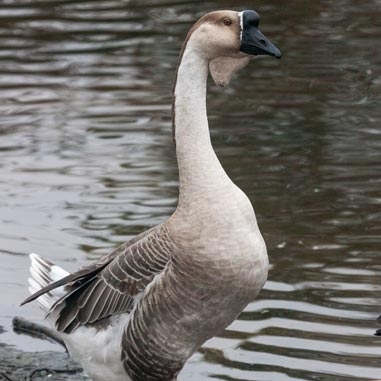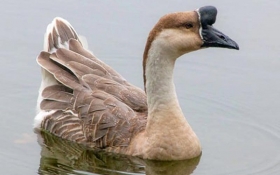
African Goose
Anser cygnoides
Animal Behavior: The African goose is a massive bird. Its heavy body, thick neck, stout bill and jaunty posture give the impression of strength and vitality.
Eating Habits: Like many domestic geese, the African goose enjoys eating grass. This fowl's nutritional needs, however, also require a balanced diet that needs the addition of special feed. Like their human counterparts, the babies need special baby food when kept in captivity, and older geese progress to more adult food.
Range: Its name is not indicative of its place of origin. Historical studies show that the African has been known by many names, and its origin has been attributed to many continents. It seems to have arrived in North America on ships that traveled around the world so its exact origin is ambiguous. It is known, however, that the African is a relative of the Chinese goose, both having descended from the wild swan goose native to Asia.
Conservation Efforts: African geese are labeled as "On Watch" endangered animals.
Animal Facts: The mature African goose has a large knob attached to its forehead, which requires several years to develop. A smooth, crescent-shaped dewlap hangs from its lower jaw and upper neck. The dewlap may become ragged in shape as the bird ages. Its body is nearly as wide as it is long. It is keelless, and has a smooth, rounded abdomen with little or no fatty lobe development. The tail points upward and folds up neatly. The eyes are large and deep-set. A mature gander averages 22 pounds, while a mature goose averages 18 pounds.
